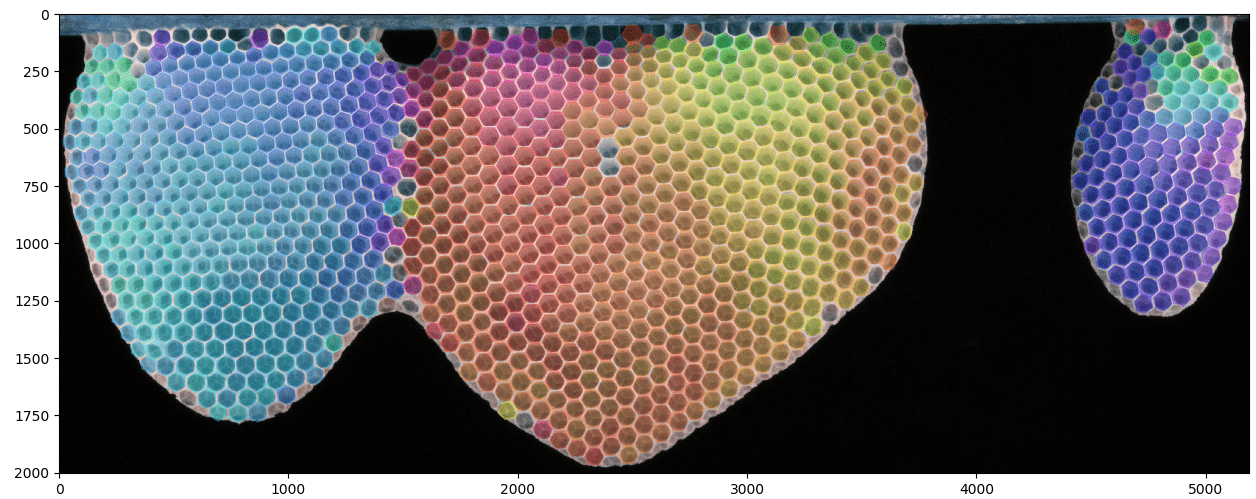Intelligence and Information Propagation in Bees
Bees are a rich source of inspiration to our research, from how they communicate to the way they coordinate, forage, construct, and swarm. Our work combines new technologies for qualitative and quantitative data collection in the field, alongside detailed studies of individual and swarms of honey bees and bumble bees.
Please also find more information here on the extensive work on pollinators at Cornell University, by our collaborators at the Dyce Lab.
Honey Bee Communication
We are interested in several of the sophisticated strategies by which honey bees communicate, beyond the well-known waggle dance that directs foragers to established food sources. Specifically, we are studying vibro-tactile communication, by which bees grab onto the comb or other bees and vibrates to disseminate information.

To help advance insights on this form of communication, we have introduced artificial shaking devices and have shown that they cause similar responses compared to natural shaking. Similarly, we are developing instrumented combs that measure and can induce local vibrations to monitor the response of the hive. We are also studying how swarms of drones distribute and amplify pheromone to efficiently locate and aggregate around the queen, leveraging what we term ‘fluidic stigmergy’.
Publications
- Jack Alexander Defay, Jacob M. Peters, and Kirstin Petersen. “A Customizable, Low-Cost Alternative for Distributed 2D Flow Sensing in Swarms”, accepted to SWARM 2021(Paper)(Presentation video)(Open source files)
- Phoebe A. Koenig, Michael L. Smith, Logan H. Horowitz, Daniel M. Palmer, and Kirstin Petersen. “Artificial shaking signals in honey bee colonies elicit natural responses”, Scientific Reports 10, 3746 (2020). (Paper)(Bibtex)
- Jacob M. Peters and Kirstin Petersen, “Honeybee swarms use a flow-mediated pheromone signaling scheme to coordinate aggregation”, abstract presented at Society of Integrative and Comparative Biology Annual Meeting (SICB), 2020. (Abstract)
Leveraging Honey Bees as Bio-Monitors
It is exceedingly difficult to make autonomous robots robustly monitor agricultural environments. Colonies of honey bees, however, efficiently locate food sources and coordinate foraging several kilometers from their hive. In collaboration with the Molnar-lab at Cornell, we are working towards technology that will allow us to record the flight of foraging honey bees and process all of this noisy data into higher-accuracy foraging probability maps. Such techniques will not only let the farmer estimate which areas of the field have been pollinated by managed pollinators, but may also help us optimize the agricultural landscapes for increased pollination.

Publications and Presentations:
- Haron Abdel-Raziq, Daniel Palmer, Phoebe Koenig, Alyosha Molnar, and Kirstin Petersen. “System design for inferring colony-level pollination activity through miniature bee-mounted sensors”, Sci Rep 11, 4239 (2021). (Paper)(Bibtex)
- H. Abdel-Raziq, D. Palmer, M. Smith, C. Chu, J. Huang, A. Molnar, and K. Petersen. “Leveraging Honey Bees as Bio-Cyber Physical Systems”. Janelia Workshop for Distributed, Collective Computation in Biology and Artificial Systems, Washington DC, 2018. (Poster)
- K. Petersen. “Flight Recorders for Honey Bees”, Penn State Annual Pollinators Symposium, April 2018.
Honey Bee Construction
Where ‘amorphous’ structures, such as the ones created by the termites would be hard for our robots to replicate, let alone navigate, robots inspired by bees may shape amorphous materials into regular patterned structures for easier navigation. We are specifically interested in 1) how thousands of locally informed bees coordinate to decide which type of cells are needed (to rear drones, workers, or queens), and 2) how these can be built in geometrically confined spaces with minimum material waste and maximum rearing capacity.

This work is being done in collaboration with Profs. Nils Napp, Cornell, and Michael Lee Smith, Auburn University.
- Michael L Smith, Nils Napp, and Kirstin H. Petersen. “Imperfect comb construction reveals the architectural abilities of honeybees” . (Paper)(Bibtex)
- Smith ML, Loope KJ, Chuttong B, Dobelmann J, Makinson JC, Saga T, Petersen K, Napp N. (2023) Honey bees and social wasps reach convergent architectural solutions to nest-building problems. PLoS Biol 21(7): e3002211. https://doi.org/10.1371/journal.pbio.3002211. (Paper)
Observation of Bumble Bee Activity
Working with our collaborators in EEB at Cornell, we have developed an instrumented hive entrance for bumble bee colonies. Read more here:
- Jingwen Du, Zach Brothers, Leah Valdes, Nils Napp, and Kirstin Petersen. “Automated Entrance Monitoring of Managed Bumble Bees”, SWARM 2021 (Paper)(Presentation video)(Open source files)
Other related publications:
- K. Petersen et al., “Arrestant property of recently manipulated soil on Macrotermes michaelseni as determined through visual tracking and automatic labeling of individual termite behaviors.” Journal of Behavioral Processes, vol. 116: 8-11, 2015. (Paper)
- K. Petersen, N. Napp, J. Chin-Lee, J. Werfel, and R. Nagpal, “3D Tracking of Building Processes in Macrotermes,” VAIB workshop, Intl. Conference on Pattern Recognition, 2012. (Pdf)


